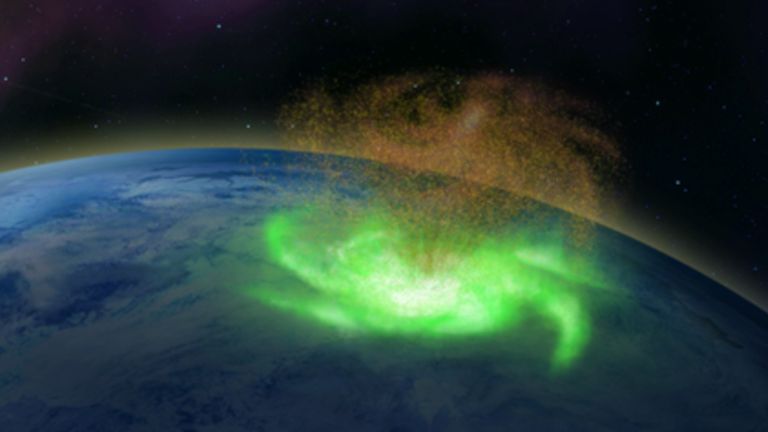Space plasma hurricanes discovered above North Pole - where it rains electrons

Scientists say they have confirmed the existence of space hurricanes, with a 600 mile-wide mass spotted above the North Pole.
Researchers led by China's Shandong University used satellite data to identify the space hurricane, finding it was not a whirling pattern of air but of plasma - ionised gas.
The mass was raining electrons instead of water and it lasted nearly eight hours before it broke down.
Professor Mike Lockwood, space scientist at the University of Reading, said the hurricanes could be a universal phenomena at planets and moons with magnetic fields and plasma.
He said: "Until now, it was uncertain that space plasma hurricanes even existed, so to prove this with such a striking observation is incredible.
"Tropical storms are associated with huge amounts of energy, and these space hurricanes must be created by unusually large and rapid transfer of solar wind energy and charged particles into the Earth's upper atmosphere.
First Space Hurricane Discovered, Mar.2, 2021
"Plasma and magnetic fields in the atmosphere of planets exist throughout the universe, so the findings suggest space hurricanes should be a widespread phenomena."
The space hurricane, which occurred during a period of low geomagnetic activity, was found to share many features with hurricanes in the Earth's lower atmosphere - a quiet centre, spiral arms and widespread circulation.
They would be expected to lead to space weather effects such as increased satellite drag, disturbances in high frequency radio communications and increased errors in over-the-horizon radar location, satellite navigation and communication systems.
The findings were published in Nature Communications.


No comments:
Post a Comment